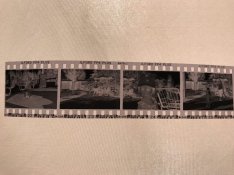Hi everyone,
I recently got in to film photography and have been toying with various 35mm SLRs over the past few months. I get the film developed and scanned at a lab and am usually quite happy with the results, but have run in to an issue I don't understand and hope someone here can help. The C-41 processing has been very consistent and good as far as I can tell, but I have now had 2 rolls of B&W developed and both rolls came out looking totally bad. I thought the first roll might have been a camera problem, as I shot it on a Ricoh P&S that I hadn't previously tested so I figured it might have a metering problem. The second roll however was shot on an Olympus OM-40 that I have shot numerous rolls of color film on. I'm just wondering if this is the right place for me to post some of the photos and maybe get advice as to why the exposure are totally off and just generally look like heck.
I recently got in to film photography and have been toying with various 35mm SLRs over the past few months. I get the film developed and scanned at a lab and am usually quite happy with the results, but have run in to an issue I don't understand and hope someone here can help. The C-41 processing has been very consistent and good as far as I can tell, but I have now had 2 rolls of B&W developed and both rolls came out looking totally bad. I thought the first roll might have been a camera problem, as I shot it on a Ricoh P&S that I hadn't previously tested so I figured it might have a metering problem. The second roll however was shot on an Olympus OM-40 that I have shot numerous rolls of color film on. I'm just wondering if this is the right place for me to post some of the photos and maybe get advice as to why the exposure are totally off and just generally look like heck.







